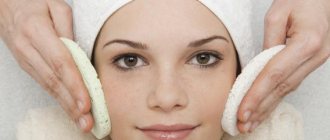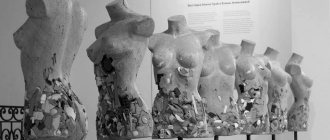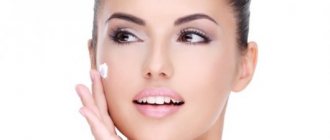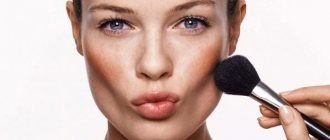What is the difference between skin type and skin condition?
Before choosing products and skincare routines, you need to know two basic concepts: skin type and skin condition.
Although there is much overlap between these two concepts, they differ on one central point: we are born with our skin type, and this characteristic is more or less stable throughout life, while skin conditions often change and are treatable.
Sounds a little confusing? Let's take an example: Sensitive skin is a skin type because a person is born with a reduced tolerance to touch, temperature changes, changes in humidity, and even sometimes hypersensitivity to certain ingredients.
On the other hand, irritated skin is a condition and not a type because it is a temporary condition and can be corrected with proper care and diet. So you can have sensitive skin without irritation. Consider, for example, sunburn; This is a type of skin irritation that can be relieved by using after-sun products and stopping sun exposure.
Sunburn
Why is this important to know? Many people end up misjudging their skin by confusing concepts. This means they choose products that are not effective for their skin or may even make it worse.
A classic example: patients often think they have oily skin, but in reality they are mistreating it. You can tell about improper care by the fact that the skin looks oily on the surface, but when you try to wrinkle your nose or forehead, it turns out to be wrinkled and dry. This condition is associated with the use of the wrong products, such as drying products for oily skin, having a completely different type. This causes the body to defend itself by increasing sebum production. If you switch to proper care, this condition will disappear.
Care for combination skin of different ages
With age, many people's mixed skin changes to normal (35 years), and after 40 it begins to fade. To restore the tone of aging skin, substances that have an anti-aging effect are required. For this reason, skincare products are divided into age categories to solve different problems.
Up to 25
Until the age of 25, the skin should be thoroughly moisturized and non-aggressive cleansers should be used. Her main need is hydration, and her problem is acne. Masks will help reduce acne.
After 25
The skin needs hydration, prevention of early aging using products with hyaluronic acid, protection from external factors with antioxidants.
After 30
Signs of aging begin to appear on the epidermis. This is due to a decrease in the amount of hyaluronic acid, which requires intensive hydration. Cosmetics should have a rejuvenating effect.
After 40
Upon reaching 40 years of age, you can fight the aging process with the help of salon procedures and the use of anti-aging products.
What determines skin type and condition?
Skin type is genetically determined by our parents and can be measured by the level of sebum production. Overactive sebaceous glands lead to oily skin, while underactive sebaceous glands cause dry skin. Can also be determined genetically: skin reactivity, capillary activity and sensitivity.
The condition of the skin varies depending on external influences and factors such as surgery, medications, stress, environment and disease.
How to determine your type yourself?
The easiest way is to evaluate the appearance of the face.
All you need for this is a mirror and good lighting. If a recently washed face shines over the entire surface, and the pores are enlarged, then the epidermis is probably oily. If shine is observed only in the central part, then we can talk about a combined type. Matte, delicate skin, prone to flaking - most likely dry. Normal skin is smooth, elastic and lacks pronounced shine.
The second method is using a cosmetic wipe.
Three to four hours before the test you need to wash your face, without using any creams, serums or even toner after that. After the specified period, you need to apply a napkin to your face and see if there are any greasy stains on it. If they are present over the entire surface, then the skin is oily. The presence of abundant discharge in the T-zone and its absence in the cheek area is a sign of a mixed type. Small oily spots indicate normal skin. If there is no discharge at all, this indicates dryness of the epidermis.
There are various questionnaires that allow you to assess the level of activity of the sebaceous glands. Questions may be devoted to the reaction of the epidermis to various cosmetics and washing. For example, if after washing there is a feeling of tightness, this indicates dryness, and the release of fat in response to the use of a nourishing cream indicates increased activity of the sebaceous glands.
Dry skin
Dry skin comes in many forms and can – if it is very dry – resemble sensitive skin. This is due to a weakened protective barrier. Dry skin often lacks moisture, both in the form of water and oil, and can also become very red.
Features of dry skin: has visible dryness and small pores, is prone to wrinkles and has poor elasticity. The skin in some areas is dense and rough. You feel tightness and itching, especially after washing your face, and your skin is dry. It is also characterized by surface peeling and periodic redness.
Dry skin
Pronounced superficial and deep wrinkles on dry skin
It is important to distinguish between dry and dehydrated skin:
- Dry skin is caused by a lack of oil secretion;
- Dehydration is a temporary skin condition that can be corrected with moisturizing treatments. Skin dehydration is caused by climatic and environmental conditions.
If your skin describes more than one of the following, you probably have dry skin:
- It has a matte surface and feels dry to the touch, and in some cases almost rough;
- Contracts when wrinkling the nose or forehead;
- The pores are almost invisible;
- Quickly absorbs the cream;
- Problems with facial makeup, often applied unevenly;
- There is no great tendency for pimples to appear, but they can occur in places;
- Skin care products may sting when applied;
- Fine lines and wrinkles on the skin are noticeably reduced after using moisturizer.
Care according to the seasons
In the hot season, the mixed-type epidermis secretes more subcutaneous fat than in the cold season - under different external conditions, care must be appropriate.
Summer care
In summer, the skin requires constant care due to increased activity of the sebaceous glands. It is advisable to carry out the cleansing procedure using appropriate gels that contain components with anti-inflammatory effects.
[product_block id=”10988"]
Once a week you need peeling with scrubs and at least twice - nutrition with a mask. Direct sunlight has a negative effect on the epidermis and promotes aging. To avoid premature formation of wrinkles in the scorching sun, it is necessary to use special products in the form of creams.
Winter care
At sub-zero temperatures, combination skin is prone to flaking, so it needs to be moisturized. Peeling with scrubs during winter is best done no more than once within fourteen days. Before going outside, it is recommended to apply protective cream (at least half an hour before).
In winter, you need to increase the amount of foods rich in vitamins (sour cream, cottage cheese, eggs) in your diet. In winter, it is possible to use a moisturizing cream with a thicker consistency than in summer.
Spring care
During spring, oily areas of mixed skin require more frequent touching with a napkin due to increased production of subcutaneous sebum. Foods high in fat should be excluded from the diet - their consumption will lead to increased activity of the sebaceous glands.
Much attention should be paid to cleansing: regular use of masks is advisable. The temperature outside the window changes from minus to plus – the use of protective cream is no longer required.
Autumn care
After a hot summer, with the onset of autumn days, solar activity also decreases, so the skin no longer requires protection from the scorching rays of the sun with special means. Now she needs nutrition in the form of regular use of masks, especially in dry areas. It is necessary to increase the amount of vitamins in the diet or use them in the form of dietary supplements.
The article is advisory in nature: before use, consultation with a specialist is required to determine the presence of contraindications.
Oily skin
Oily skin is one of the most common skin types, and also one of the most challenging, as it often causes a number of other problems. It is no coincidence that the words “greasy and dirty” are often used in combination. Although oily skin is not necessarily prone to acne, this type is at higher risk of developing acne. But according to research, oily skin prevents the appearance of wrinkles.
Features of oily skin: shiny, with large pores and fine wrinkles. May have a tendency to comedones (blackheads) and pimples. The skin has a rougher texture and an oily surface. You often feel the urge to wash your face, especially in the afternoon when the most oil is released.
Oily skin with enlarged and visible pores
Acne on oily skin
If you can cross off a few items on this list, it means you have oily skin:
- The face appears oily, both with and without makeup. Fat is felt when touched. Excess fat can occur on the face, neck, shoulders and back.
- Skin tends to become shiny throughout the day. The shine appears relatively quickly even after cleansing.
- Enlarged and visible pores around the nose, forehead and cheeks;
- Blackheads and pimples appear and can cover the entire face;
- The skin does not like oily cream;
- Makeup tends to slide off my skin quickly and it's hard to find a solid base underneath;
- Fewer fine lines and wrinkles than people of similar age.
Age-related skin changes
From the moment a person is born, his skin begins to undergo age-related changes. Let's look at several stages that have specific age-specific characteristics.
Newborn skin
In newborns, the skin is covered with a curdled, cheese-like lubricant - vernix caseosa, consisting of fat, glycogen, extractives, salt and cholesterol, odorous and volatile acids and vitamins. After a few days it disappears due to swaddling and drying.
Due to the first irritation in their life from environmental actions, the so-called erythema of newborns , or physiological catarrh of the skin. It becomes hyperemic - bright red, sometimes with a bluish tint. After two or three days, the hyperemia gives way to peeling, especially pronounced on the palms and soles. This is a kind of chemical peeling!
Baby skin
The progression of age-related changes takes its course. The skin becomes thicker, its protective functions gradually become more advanced. Nevertheless, a child’s skin retains a number of differences:
- The epidermis (outer layer) is thinner and the cells are much smaller. Irritation develops more easily.
- The density of sweat glands is 5-7 times higher than in adults. At the same time, the thickness of subcutaneous fat is lower. Hence, less perfect thermoregulation, a greater tendency of children to hypothermia or overheating.
- A larger specific amount of sebaceous glands leads to the fact that children's skin is more often of the oily type than dry.
- The ability to form melanin is lower than that of an adult and therefore babies are so helpless in relation to the action of ultraviolet rays.
Girl/boy skin
At this age, the final formation of the skin occurs, and although there are no age-related changes yet, other troubles come to the fore: the skin is unpleasantly shiny, the pores are clogged, which is typical not only for the skin teenagers, but also for the skin of girls . Thus, the main problem for both boys and girls during puberty is acne (adolescent acne). Here it may turn out that as hormonal changes are completed, acne will fade away, gradually disappear by the age of 25-30, and, perhaps, you will have to be treated comprehensively and for quite a long time, but almost always with victory at the finish line; The main thing is to consult a doctor in time. And it should be remembered that in addition to a temporary cosmetic defect, acne can seriously affect the immature psyche of a teenager, and also, in severe cases, lead to irreversible or rough scars that are difficult to correct.
In addition, from the onset of puberty until adulthood, under the influence of female sex hormones, there is a gradual change in the percentage of of ceramides (ceramides). Since ceramides, among other things, play an important role in the formation of the skin barrier, which controls transepidermal water loss (TEL), the functioning of this barrier can be significantly influenced by hormonal levels.
Skin of a young woman - over 30 years old
After a short period of flourishing female beauty, when the unpleasant acne has already passed, the first signs of age suddenly begin to appear. This is not aging yet, but already the beginning of fading. What changes happen after 30?
- Predominance of the stratum corneum of the epidermis.
- The rate of division of basal cells decreases, the basal layer becomes thinner, while the thickness of the stratum corneum, on the contrary, increases. This process causes the skin, especially dry skin, to become parchment-like.
- Reduced production of collagen and elastin fibers, their degenerative changes.
- Scientists have found that starting from the age of 30, collagen synthesis decreases by 1% per year. At the level of the dermis, collagen and elastic fibers thicken, their arrangement becomes more chaotic, and the process of their regeneration slows down. The skin loses its elasticity .
- Microcirculation disorder leads to deterioration of complexion.
- A gradual breakdown of microcirculation leads to a decrease in trophism (nutrition), which in turn starts a vicious circle of accelerating the aging process. In addition, reduced blood supply simply leads to a deterioration in complexion.
- Muscular dystonia is a disorder of muscle tone, especially the muscles of the face and neck.
- The muscles of the forehead and chin shrink, forming deep transverse and longitudinal wrinkles. The muscles of the cheek area, on the contrary, sag, causing drooping of the corners of the mouth and deformation of the oval of the face.
Sex differences
It is interesting to note a number of gender differences - the difference in the properties and structure of the skin between men and women. The specific density of collagen, which characterizes the “laying” of fibrils in the dermis, is significantly lower in women at almost any age than in men. This is due to the influence of androgens, so men are luckier in this case - they seem “younger” than their peers of the opposite sex.
Also, there are gender differences in the thickness of subcutaneous fat, as well as in the structure of its distribution among parts of the body (the so-called female and male body type).
Sensitivity to pain in women, despite popular belief, is significantly higher than in men, which is associated with the thinner thickness of women's skin.
Thanks to the female sex hormones estrogen, the skin becomes more elastic and firm. With a sharp jump in weight, total sagging of the skin does not occur. And the lack of estrogen threatens excessive hair growth of the skin, the color becomes pale with a grayish tint.
Features of the skin of a woman over 40 years old
The processes of physiological age-related changes in the skin described above are increasing. There is a process of involution - “reverse” development, age-related dystrophy. There is a decrease in the thickness of the epidermis, hypodermis, and the length of long hair follicles, and atrophy of small sebaceous glands begins. Collagen fibers thicken, connective tissue degeneration occurs; Some of the fibers stick together or fall apart. The amount of mucopolysaccharides in the skin decreases, which leads to its dehydration.
External manifestations of age so far become noticeable only in those zones where several predisposing and unfavorable factors are summed up at once.
Thus, crow's feet appear in the corners of the eyes. This is due to the fact that the skin around the eyes is three to four times thinner than in other areas of the face, there is a minimal layer of hypodermis under it, there are few sebaceous glands in this area, the secretions from which protect the skin from harmful environmental factors, little elastin and collagen fibers Well, in addition, due to facial movements, the skin around the eyes is subject to constant mechanical deformation. All this leads to the fact that the first “age-related” worries in the mirror arise about the skin around the eyes.
Other “problem” age areas:
- nasolabial fold - its depth and “expressiveness” gradually increases.
- skin of the eyelids - there is an excess of it, the skin becomes heavier, folds appear on the eyelids.
- neck skin - the first familiar wrinkles and folds of skin on the neck appear, and with excess weight, a “double chin”.
In addition, many women experience problems related to hormonal status, for example, hair growth on the upper lip. Microcirculatory disorders lead to vascular appearances - rosacea, spider veins and telangiectasias.
Skin of a woman over 50 years old
The increase in skin aging processes becomes avalanche-like and is associated with the general condition of the body. At the pathophysiological level, the following changes occur in the skin:
- thinning of the skin,
- reduction of subcutaneous fat on the face, cheeks and neck with its simultaneous thickening on other parts of the body,
- reduction in the amount of mucopolysaccharides in the dermis,
- collagen degeneration,
- decreased blood supply to the skin
- change in skin type towards dry, sometimes even “parchment”
- significant slowdown in regeneration processes
- increase in pH - shift to the alkaline side
- decrease in barrier properties.
One of the most significant factors leading to external changes in the skin in this period of life is the age-related hormonal changes of a woman - menopause.
Estrogen inhibits the secretory activity of the sebaceous glands, increases the content of hyaluronic acid, converts collagen into an insoluble form, and is involved in the regulation of melanogenesis. A decrease in the level of estrogen in the blood leads to the fact that the oiliness of the skin decreases, it becomes dry and thin, like parchment, its hydration decreases and elasticity, age spots appear.
Below is a list of external manifestations - the most characteristic (more than 10%) skin changes in women by the age of fifty (the list is sorted by frequency of occurrence):
- Circles under the eyes
- Horizontal wrinkles on the forehead
- Vertical glabellar wrinkles
- Wrinkles under the eyes
- Drooping of the upper eyelid
- Hair growth above the upper lip
- Bags under the eyes
- Telangiectasia
- Pronounced deep nasolabial folds
- Crow's feet in the corners of the eyes
- Senile lentigo (senile “freckles”)
- Radial wrinkles around the lips
- Double chin
- Increased hair growth on the cheeks and chin
- Sagging skin with changes in facial ovalTypes of st
Causes of premature aging of facial skin:
- Unfavorable environmental conditions, when polluted, insufficiently humid air and wind contribute to clogged pores, inflammation, and metabolic disorders.
- Lack of moisture, which changes the structure of the skin. The deficiency cannot be eliminated by drinking, since cosmetics are needed to retain water molecules.
- Bad habits - smoking, alcohol, drugs as a source of toxins. The resulting toxic compounds destroy cells, promote the formation of free radicals, and provoke nutritional deficiency.
- Lack of nutrients and vitamins - participants in metabolic, oxidative, reduction processes, and immune reactions.
- Stress and a busy life schedule, a tendency to workaholism.
- Active facial expressions are the habit of wrinkled nose, forehead, and eyebrows.
- Improper care, causing loss of moisture, inflammation, and with early use of age-related cosmetics - disruption of skin functions.
- Sleep less than 7 hours a day, which is why tissues do not have time to renew themselves.
Types of facial skin aging and their characteristics
Despite the fact that everyone’s face ages, it happens differently. One of several aging scenarios is being realized. What it will be like depends on your skin type, as well as your body type, face shape, and health status.
Tired
This type of aging is typical for those with normal and combination skin, with an average degree of development of subcutaneous fat and muscles. They have a thin or normal build and a diamond-shaped or oval face.
Fatigue aging is accompanied by the following phenomena:
- complexion becomes dull;
- muscle tone and turgor decrease;
- pastiness develops and volume is lost;
- the corners of the mouth and eyes droop;
- a tear trough appears and the nasolabial fold deepens.
Pastosity is an unexpressed swelling or pre-edema state, which is accompanied by a decrease in elasticity and a feeling of doughiness when pressed. In the morning the face is fresh, but by the end of the day it takes on a sad or sad expression.
The “tired” type of aging is considered favorable; it easily responds to procedures.
finely wrinkled
This is how thin women with dry skin and poor development of the subcutaneous fat layer age. As they age, they experience:
- moisture deficiency;
- wrinkles around the mouth, eyes, forehead;
- drying out of the face like a baked apple.
The advantage of this development is that due to the absence of a fat layer on the face there is no ptosis (sagging), so the oval contour is preserved for a long time.
Deformation
It occurs in dense people with a full face, who have combination or oily skin, with a well-developed layer of subcutaneous fat. Often such women suffer from venous insufficiency, so they are characterized by facial redness and rosacea.
Signs of this type of aging:
- “creeping” oval of the face;
- jowls (sagging skin in the area of the lower jaw and neck);
- formation of a double chin;
- bags under the eyes;
- edema;
- nasolabial folds;
- “marionette lines,” which run from the corners of the mouth to the chin, giving the face a sad or stern look.
The lower third of the face suffers the most.
Combined
This type of aging combines all the phenomena described above. It is typical for normal or slightly overweight people with combination skin. Small wrinkles appear in “dry” areas, and where fatty tissue is developed, pastiness appears.
The combined type is the most complex, but at the same time the most common.
Muscular
This is how the face of women of Asian origin changes with age, who have well-developed muscle muscles as opposed to a layer of fat. The face looks young for a long time, the oval remains clear, wrinkles do not bother you over the years.
Age-related changes occur rapidly, within one to two years, due to weakening of muscle tissue. Creases appear, deep wrinkles appear, and the upper eyelid droops.
This is the final stage, which occurs in everyone after 75 years of age. At this stage, the signs listed above appear.
Is it possible to prolong youth?
The answer is yes. It is enough to follow simple rules from an early youth:
- Protect yourself from the sun's rays - both with wide-brimmed hats and cosmetics with light filters, and wear sunglasses.
- Do not smoke or abuse alcohol, give up drugs.
- Include fresh vegetables and fruits, seafood in your diet, reduce the amount of sugar, simple carbohydrates, and cholesterol.
- Maintaining normal weight, fluctuations are also undesirable.
- Sleep at least 7 hours.
- Avoid stressful situations.
- Take vitamin complexes, but only after visiting a doctor who will determine the body's needs.
- Exercise in moderation.
- Do gymnastics and facial massages.
The cosmetologist will select care, taking into account the types of facial skin aging and the problems that need to be solved. How can a cosmetologist help, in what ways?
Rejuvenation techniques.
Fortunately, a beautiful, good-looking woman over forty is no longer a miracle, but rather the norm. A healthy lifestyle, proper nutrition, getting enough sleep, vitamin therapy and, of course, the achievements of modern medicine and cosmetology help to achieve this.
Miguel Cervantes said: “It is a sin if a woman looks less beautiful than she could be.” Nowadays this expression is especially relevant, because... So many tools and techniques have been created to maintain and improve female beauty that it’s really a sin not to use them!
Botox injections
The use of Botox for rejuvenation has been used for quite some time, its effectiveness and safety have been proven. More often it is used to correct aesthetic problems of the upper part of the face. This procedure will help remove facial wrinkles on the forehead, on the bridge of the nose, in the corners of the eyes, above the lips.
Mesotherapy
For this procedure, various compounds and extracts are used, which are selected depending on the needs of the skin and are administered intradermally. Facial mesotherapy is quite effective and popular - it can be used to fight age spots, wrinkles, sagging skin, puffiness under the eyes, scars and stagnant spots from acne, rosacea.
Biorevitalization
Another procedure that is based on injections of hyaluronic acid-based drugs directly into the skin. This procedure helps restore skin elasticity, increases skin resistance to external influences, restores its water balance and physiological processes within the skin, and helps restore collagen production.
Biorevitalization helps prevent the appearance of pronounced signs of aging; it is indicated both at a young age and at a more mature age for more effective rejuvenation.
RF lifting
For those who prefer rejuvenation without needles and injections, the RF lifting procedure is perfect. It is based on the use of radio frequency radiation, which affects the deep layers of the epidermis. This procedure works great on the areas around the eyes, on the cheekbones and cheeks, on the chin and neck, on the forehead - in short, on all problem areas.
With the help of thermolifting, you can quickly restore skin tone, remove sagging, and tighten wrinkles. It is recommended for skin rejuvenation after the age of 35. The procedure is completely painless, does not require a recovery period, and is well tolerated.
Fractional laser rejuvenation
This is a fairly new procedure, also aimed at rejuvenating the skin and eliminating defects. Fractional laser rejuvenation helps to significantly improve the appearance of the skin, get rid of wrinkles and age spots, tighten the skin and improve its texture.
Photorejuvenation
The photorejuvenation procedure makes it possible to get rid of age-related skin changes and delay their appearance. This method gives a long-lasting, sustainable result when used systematically over a course. Positive changes are noticeable after the first procedure.
A cosmetologist has many more interesting and effective things in his arsenal, visit him and stay young and beautiful as long as possible.
Dermatovenerologist of the outpatient dermatovenerological department No. 3 of the health care institution “City Clinical Dermatovenerological Dispensary” Gapanovich Ekaterina Vyacheslavovna, tel. 8-029-772-58-49.
Combination skin
Combination skin is a combination of several skin types. In fact, everyone's skin matches to a greater or lesser extent. However, in combination skin, there is a clear difference between the skin in the T-zone (forehead, nose, chin) and the cheeks.
If your face is oily with noticeable pores and rashes in the T zone (forehead, nose, chin), but dry or normal on the cheeks and jaw area, then you have combination skin. Caring for this type of skin is quite complicated, since you need to simultaneously take care of opposite conditions - dry and oily areas. Your goal is to achieve balance.
An oily T-zone (forehead, nose and chin) and dry cheeks indicate so-called combination skin
If your skin describes more than one of the following, you probably have combination skin:
- The skin on the cheeks behaves completely differently than in the T-zone; they are drier;
- The skin becomes oily and shiny during the day, especially around the nose, as well as on the forehead and chin;
- Enlarged pores around the nose;
- Black spots around the nose;
- Acne appears in the T-zone, but rarely on the cheeks and upper forehead;
- It is difficult to find a foundation that will look perfect on the entire face;
- Different types of products and procedures can be used depending on the area.
Dark skin - care features
Its owners produce melanin pigment in sufficient quantities, so sunburn practically does not occur on dark skin. Wrinkles appear on it quite late, but when they appear, the face immediately looks tired.
Features of dark skin:
- Pigment problems. Dark spots from acne, scars and scratches often remain on the face and décolleté. During pregnancy, dark-skinned women often develop age spots that do not go away.
- Dark skin, like all other skin types, can be oily, sensitive, dry or even prone to rosacea, and therefore needs care.
Recommended procedures:
- Chemical peeling to lighten and even out skin tone. The procedure must be performed by a very experienced specialist. Too much exposure will cause age spots to appear.
- Dysport or Botox and fillers based on hyaluronic acid and other components. For dark skin, these medications are as necessary as for other types.
If you have skin problems, such as clogged pores and inflamed areas, additional cosmetic procedures will be needed.
Normal skin
Normal skin is not the most common type. It has a normal level of moisture and oil - this is the skin in balance. This skin type rarely experiences really big problems: its condition may vary, but in general it is easy to maintain.
Features of normal skin: Has a healthy glow and color, without large pores, wrinkles or fine lines. The skin is soft, moist, with a smooth and fine structure.
If your skin is uniform and balanced, rarely suffers from oiliness, breakouts or dryness, and you have no adverse reactions to various skin care products, congratulations on winning the genetic lottery and having normal skin.
Normal facial skin type
Although this type of skin is very easy to care for, unfortunately, it is characterized by signs of premature aging.
If your skin describes more than one of the following, you probably have normal skin:
- Looks completely normal, even without scrub and creams;
- Beautiful and soft;
- The skin around the nose may sometimes be a little shiny;
- Most cosmetics are suitable;
- Pimples and blackheads are rare, but they do happen from time to time;
- The pores are not very visible;
- Skin changes slightly from season to season;
- Makeup does not come off or smudge.
Steps to care for combination skin
Daily care for mixed-type epidermis includes three stages:
- cleansing;
- toning;
- hydration.
In addition to daily care, there are procedures that are performed at certain intervals:
- deep cleansing;
- nutrition (masks).
The first procedure is performed no more than once every seven days, masks are applied at least twice a week. The main rule for caring for the epidermis of the face: products for cleansing, toning, moisturizing, nourishing, and deep cleansing must be appropriate for the age and type of skin.
Cleansing
As was written above, the use of toilet soap should be avoided in order to avoid drying out dry areas and enhancing the work of the sebaceous glands in oily areas. The T-zone requires the presence of components with an anti-inflammatory effect. This area has a high fat content, so substances that promote the development of fungi on the epidermis are highly undesirable.
Toning
The toning procedure is an integral part of the skin care process. A lotion or tonic that does not contain alcohol can act as a tonic agent. It is recommended that the components of the product include substances with an anti-inflammatory effect (panthenol, bisabolol). Using toning:
- the structure is leveled;
- the functioning of the sebaceous glands is regulated;
- pH is normalized;
- pores are reduced.
After cleansing, combination skin needs hydration.
Hydration
The moisturizing stage should be given special attention in winter, when caring for mixed skin is similar to caring for dry skin: special products are applied at least half an hour before going outside, and a moisturizer is applied daily. In hot summers, it is advisable to additionally spray areas with dry skin with thermal water. Products used for daily moisturizing can be in the form of hydrogels or creams, which contain:
- herbal extracts;
- hyaluronic acid;
- ceramides;
- vegetable oils.
It is not recommended to use cream or hydrogel with an oily texture to avoid clogging of pores.
Nutrition and peeling
Nutrition and deep cleansing procedures are intended for different skin zones: the first is dry, the second is oily. Nutrition is carried out using masks, they must be applied once or twice a week, deep cleansing - once (in winter, once every two weeks). The mask can be prepared independently at home or purchased ready-made; the procedure helps:
- normalization of metabolic processes;
- nutrition of the epidermis;
- toning;
- relieving inflammation.
Clay is suitable for application to the entire face; it will reduce oily shine and will not dry out the skin. It can be used in its pure form, diluted with water to a paste consistency, or as part of homemade masks.
Deep cleansing is performed using:
- scrubs;
- peeling;
- film masks.
The products are applied only to oily skin in the T-zone; the deep cleansing procedure can be performed at home or in the salon. Scheme for peeling yourself at home:
- Wash your face and lubricate your eyelids with a cream with a rich consistency.
- Place two tablespoons of dry chamomile, linden or mint in a bowl and pour two liters of boiling water.
- Tilt your face over the bowl and cover yourself with a towel to get the effect of a bath or sauna.
- After ten minutes, pat your face dry with a tissue and apply a peeling product (store-bought or homemade) according to the instructions or recipe.
- Rinse off the product with warm water.
Scrubs cleanse, tone the skin and improve blood flow
Sensitive skin
Sensitive skin is best described as “reactive” skin. This means that it reacts and changes character depending on its environment. Depending on how sensitive your skin is, it can react to everything from changes in temperature or humidity, the cosmetics you use, touch, and more. Many people confuse dry or irritated skin with sensitive skin, but in reality, sensitive skin may be oilier and suffer from impurities and breakouts.
Features of sensitive skin: it is thinner, lighter and more sensitive, with impaired barrier function and a large number of capillaries. The skin has an uneven structure. Requires special care and caution when using new cosmetics. People with sensitive skin who are more exposed to the sun develop eczema or rosacea.
Rosacea on sensitive facial skin
If your skin describes more than one of the following, you probably have sensitive skin:
- Varies greatly from season to season;
- Makeup and grooming are often associated with acne;
- Tends to become hot and red when touched or physically affected (such as from cleansing masks or facial scrubs);
- Lots of redness on the skin in general;
- Allergy, rash, itching, dryness;
- Flushes easily from heat or cold;
- Not all means are suitable. Often experiences adverse reactions when using new products;
- Unpredictable and can change greatly from day to day.
How to determine skin condition
The condition of your skin is constantly changing and depends on everything from hormones, diet, environment and the products you use. Therefore, pimples, redness, excessive dryness and other problems can sometimes appear, regardless of skin type.
All skin types are susceptible to skin conditions, but some are more common in some skin types than others.
Typically, cosmetologists distinguish 4 different skin conditions, and you can suffer from several diseases at the same time. You can also easily find yourself in a situation where you are not experiencing any of the following problems, and thus your normal skin type is perfectly “balanced”.
The type of skin condition you have will determine which products and treatments you should choose based on what you want from your skin care routine.
Irritated skin
Irritation can occur in all skin types and manifests itself in different ways from time to time. There are many reasons for this: temperature changes, exposure to the sun, food, diet, touch, bacteria and much more.
If one or more of the following descriptions apply to you, this is a sign that your skin is currently irritated:
- The skin suddenly turns red;
- Suddenly becomes warm;
- There is itching, tingling or burning;
- Suddenly a lot of pimples appear - even where there are usually none.
Skin type and aging
With age, the epidermis and deep layers of the dermis lose moisture. This process occurs most quickly in those with dry skin that is not protected by sebaceous gland secretions. In this case, the face quickly becomes covered with a network of wrinkles. Happy owners of a normal type age more slowly, and those who in their youth suffered from excessive oiliness of the epidermis continue to enjoy the smoothness of their faces for a long time. However, time does not spare them either: dense and thick skin is not prone to the formation of fine wrinkles, but deep folds often appear on it.
The process of withering is accompanied by a loss of elasticity and the appearance of sagging. Large and small wrinkles, pigmentation, and vascular defects appear. Facial features lose clarity, volume moves from the cheekbones downwards - jowls and a double chin appear.
All these changes can be corrected in the early stages. The main thing is not to miss the moment and visit a cosmetologist in time, who will develop an effective anti-age strategy taking into account your skin type and age-related changes.
Contaminated skin
The condition is characterized by open and closed comedones (blackheads) and blockages beneath the surface of the skin. The skin has an uneven surface.
Contaminated skin with closed comedones
The black color of acne is oxidized sebum, not dirt. The second type of blockage, a pimple, is located on the outside of the pore and is often yellow in color. You probably tried to squeeze them out, and saw that the contents were a yellowish liquid. The final type of blockage is a pimple that sits under the skin, and it tends to be very painful and uncomfortable and also takes longer to heal.
If one or more of the following descriptions apply to you, this is a sign that your skin is clogged:
- Small blackheads around the skin, mainly located around the nose and cheeks;
- Swollen pimples with a yellow “head” around the face. They vary in size and usually occur on the forehead, around the mouth and near the nose;
- You experience uncomfortable, swollen, and painful pimples that sit under the skin and can be painful.
Dehydrated skin
This condition causes dandruff and very fine wrinkles. Comedones (blackheads) and excessive sebum production may occur. The skin on the surface feels tight, especially on the forehead and above the cheekbones.
Dehydrated skin
Dehydrated skin is very common, but it is easy to treat. It goes without saying that drinking plenty of water is important, and special care is also important.
If one or more of the following applies to you, this is a sign of dehydrated skin:
- The skin turns red, but does not seem irritated;
- The appearance is dry and small, fine lines appear, especially pronounced around the eyes, forehead and mouth. Immediately after applying the cream they are much less noticeable;
- The skin quickly absorbs care products.











